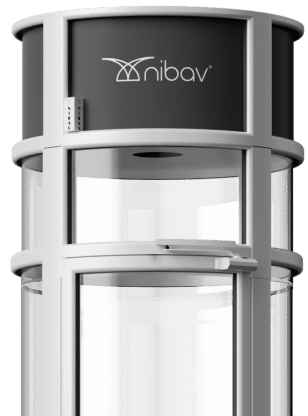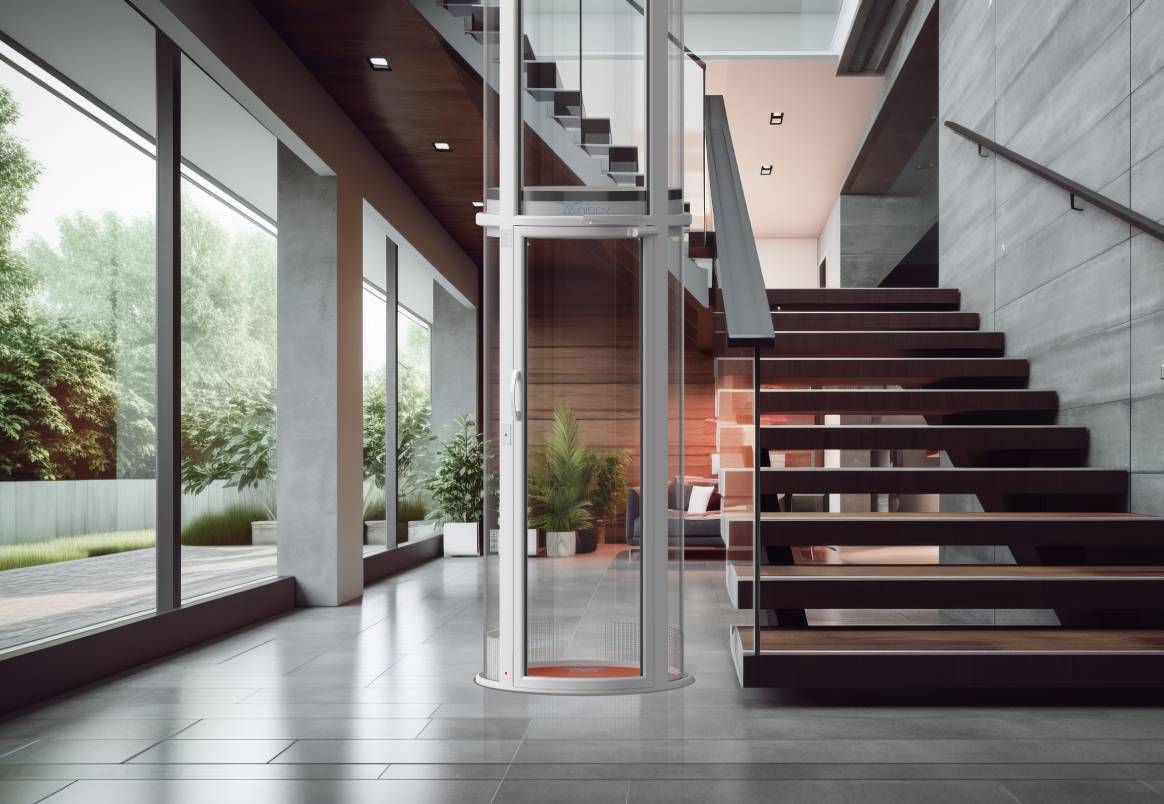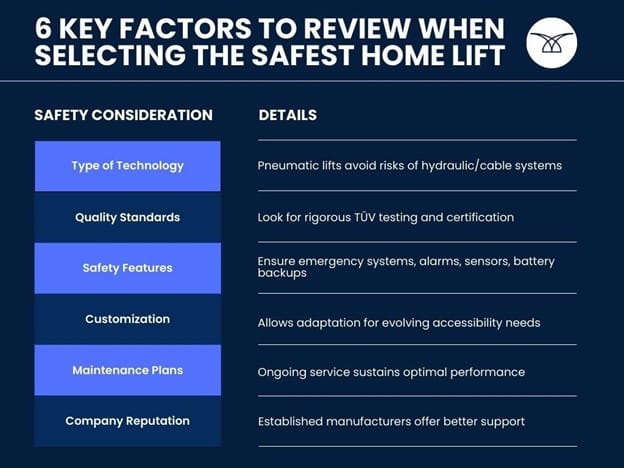In modern, multi-level homes, home lift safety and convenience are paramount concerns, especially when it comes to mobility between floors. Home lifts once considered a luxury, have now become an essential component of contemporary living by providing not just ease of access but also a secure environment for all household members. This article explores how the latest lift technologies and safety features create a protected living space for users of all ages and abilities.
Key Aspects That Enhance Home Lift Safety
Several key factors contribute to making home lifts an integral part of a protected household environment, ensuring the safety of all users:
Innovative Safety Mechanisms
Today’s home lifts incorporate advanced safety mechanisms designed to protect users in various situations. For example, Dual Hardened Cross Compound (HCC) Brakes ensure the lift stops smoothly and securely, even during sudden power outages. This significantly reduces the risk of hazardous free falls.
Other common home lift safety features include child safety locks, emergency stop buttons, alarm systems, and battery backups. These prevent accidental use, enable quick response to emergencies, and ensure continued operation when the power goes out.
Smooth and Stable Suspension
The latest lift models, like Nibav’s Series III, utilize suspension systems that guarantee exceptionally smooth and stable landings on every floor. This minimizes wear on components while preventing jerky stops and starts, which are crucial for home lift safety and reliability.
Rigorous Standards Testing
Reputable home lift manufacturers ensure their products meet extensive safety and quality standards. Many lifts comply with European regulations like the Machine Directive 2006/42/EC and are TÜV certified. This rigorous testing is a mark of their superior safety and reliability.
Advanced Technology
Pneumatic or air-driven lift technology offers enhanced home lift safety through its design and operation. With minimal shaft requirements, unbreakable glass enclosures, and self-supporting structures, pneumatic lifts avoid the risks associated with old cable and hydraulic systems.
Emergency Features
Backup batteries, auto-descent systems, emergency stop buttons, and alarms ensure users’ protection in case of power failure or other home lift safety situations. These features facilitate safe exit and contact for assistance.
Customization
Lifts with wheelchair-compatible configurations, accessibility options, and modular upgrades can be customized to suit users’ specific needs and ensure home lift safety as households and mobility requirements evolve over time. This allows for a future-proof solution that prioritizes consistent safety in your home.
Regular Maintenance
Ongoing maintenance and qualified technician support enable optimal, reliable performance and prompt issue resolution, all of which are crucial for ensuring the ongoing safety of home lifts over their lifespan.

Why Home Lift Safety Matters
Home lifts play an indispensable role in household safety by:
- Preventing injuries from falls on stairs
- Allowing safe access for those with limited mobility
- Facilitating emergency exit when needed
- Giving parents peace of mind about children’s use
- Supporting users of all ages and capabilities
- Enabling households to comfortably age in place
- Sustaining independence for members with disabilities
Their capacity to provide secure access for entire families is invaluable.
Recommend Reading
Conclusion
Today’s home lifts are an integral element of contemporary living, providing not just convenience but also critically important home lift safety and security within multi-level residences. Cutting-edge models incorporate extensive mechanisms, technology, customizations, and emergency systems to create a protected environment for users of all ages and mobility levels to comfortably access all floors of their homes. When selecting a home lift, be sure to diligently evaluate key domestic lift safety considerations to ensure your family’s protection and peace of mind.


